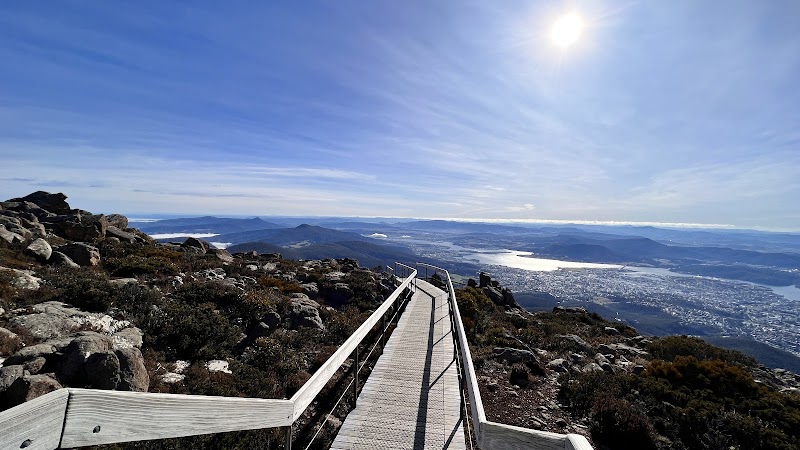Spotting Airplanes Near Great Bay: Your Practical Guide to Tasmania’s Coastal Skies
Great Bay provides an exciting spot for airplane enthusiasts and travelers wanting to combine coastal beauty with airborne spectacle. Discover how to catch impressive views of planes over Tasmania’s southern shores and plan memorable excursions nearby.
Bring Binoculars for Clearer Viewing
A mid-range pair of binoculars enhances your ability to see planes in detail against the vast coastal backdrop.
Schedule Visits During Calm Weather
Coastal winds can affect visibility and plane activity; aim for calm, clear days for the best airplane spotting.
Use a Zoom-capable Camera
A camera with good optical zoom helps capture airplanes in flight without losing image quality due to distance.
Protect Against Sun and Wind Exposure
Waterproof windbreakers and sun protection are recommended as the bay area is exposed and winds shift frequently.
Spotting Airplanes Near Great Bay: Your Practical Guide to Tasmania’s Coastal Skies
Airplane Near Great Bay: Discover the Skies Above Tasmania’s Scenic Coastline
Great Bay offers more than its sweeping ocean views and rugged shorelines—it’s also an impressive vantage point for those fascinated by aircraft. Whether you're an avid plane spotter or a casual traveler curious about air traffic, the area around Great Bay provides excellent opportunities to observe airplanes against Tasmania’s coastal backdrop.
The skies here are crisscrossed by small planes and charters frequently flying to and from nearby airstrips and airports. While there’s no major commercial airport directly at Great Bay, small aircraft flights are common, offering unique aerial perspectives and occasional low passes perfect for aviation enthusiasts.
Keywords like "airplane near Great Bay," "Tasmania coastal flights," "small plane watching Great Bay," and "aerial views Tasmania" capture the essence of this experience. These terms are crucial for travelers searching for airplane spotting opportunities combined with exploring Tasmania’s southern shore.
From Great Bay, particularly during clear weather, you can spot planes heading to nearby airports such as Hobart International or smaller regional fields. The freshwater wind conditions over the bay can influence flight paths, adding a dynamic element to any spotting session.
If planning to witness aerial activity, dawn and dusk are ideal—times when light and activity both peak. Pair your airplane viewing with coastal hikes or boat tours to enrich the outing. Fine-tune your preparation with binoculars, a camera with good zoom, and keep an eye on weather fluctuations, since coastal winds often dictate how flights navigate the area.
In practical terms, search "airplane near Great Bay Tasmania" to tap into local spotting guides and community tips. Booking local excursions that offer aerial tours or combination boat and air trips can elevate your adventure further.
Below, find a selection of nearby trips and excursions. These experiences amplify your visit by bringing you closer to Tasmania’s rugged coastline, native wildlife, and outdoor thrills—perfect additions to an airplane-spotting day.
Nearby Trips & Excursions
- Coastal Kayaking Adventures: Paddle along Great Bay’s rugged beaches and discover hidden sea caves.
- Wildlife and Birdwatching Tours: Track local species from eagles to sea birds near the shore.
- Guided Coastal Hikes: Traverse trails with ocean cliffs and forested ridges, ideal for pairing with airplane spotting.
- Aerial Scenic Flights: Short flights over Great Bay offer stunning views and close encounters with the landscape from above.
Each option invites you to engage with Tasmania’s environment in ways that complement the airplane-watching experience—combining grounded exploration with glimpses of the skies above.
Nearby Trips
All Adventures
Boat Charters
Water Activities
Adventures near Hobart
Discover the unique and memorable adventures that make Hobart special.
Frequently Asked Questions
Are there regular commercial flights over Great Bay?
Great Bay primarily sees small planes and chartered flights rather than large commercial jets. Most regular flights operate from nearby airports like Hobart.
Where are the best spots for airplane watching near Great Bay?
Clear coastal points with open sky views, such as beach overlooks and ridgelines near Great Bay, are ideal for watching planes glide overhead or land at nearby airfields.
Can I book aerial tours that fly over Great Bay?
Yes, local operators offer scenic flights over Great Bay, providing sweeping views of the coastline and nearby wilderness regions.
What wildlife might I encounter during airplane spotting near Great Bay?
Seabirds such as gulls, terns, and occasionally sea eagles patrol the skies, while coastal marsupials and wallabies inhabit nearby forest edges.
Is there any historical significance related to aviation in Great Bay?
Though Great Bay itself isn’t a major historical aviation site, the nearby region played roles during WWII as emergency airstrips and training grounds for pilots.
What environmental concerns should visitors be aware of when visiting Great Bay?
There are strict local conservation guidelines to protect fragile coastal vegetation and bird nesting areas, so stay on marked paths and avoid disturbing wildlife.
Recommended Gear
Binoculars
Essential for detailed plane spotting from distances across the bay.
Windbreaker Jacket
Protects against strong coastal winds that frequently push visitors near the bay.
Camera with Optical Zoom
Recommended for capturing clear images of planes and landscapes.
Hydration Pack
Keeps you hydrated especially during warmer, sunny airplane spotting outings.
Local Insights
Hidden Gems
- "The secluded cliffs east of Great Bay provide uninterrupted views for plane watching far from crowds."
- "A rarely visited freshwater inlet north of the bay shelters local bird species and offers tranquil breaks."
Wildlife
- "Sea eagles hunting coastal fish."
- "Eastern quolls spotted in surrounding bushlands."
- "Migratory shorebirds along the tidal flats."
History
"Nearby airstrips were vital for pilot training during WWII, with many remnants of the era still hidden in forest clearings."
